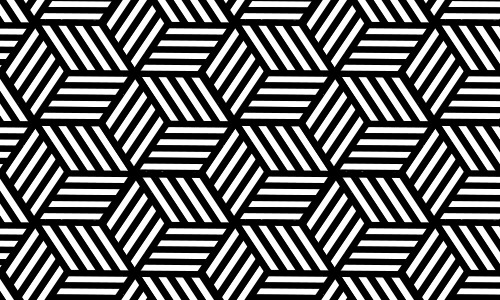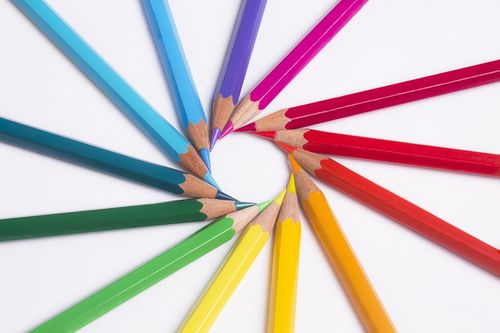Difference between revisions of "Bitmap Graphics"
(→Colour Depth) |
(→Resolution) |
||
| Line 28: | Line 28: | ||
The image above is the same image but downsized to the larger resolution of 200 x 200. This resolution is double the previous image so it looks of equal quality even though it is double the resolution. | The image above is the same image but downsized to the larger resolution of 200 x 200. This resolution is double the previous image so it looks of equal quality even though it is double the resolution. | ||
| + | |||
| + | == Problems with Bitmap Graphics == | ||
| + | One of the major problems with bitmap graphics is that when an image is zoomed into, you can see all of the pixels used for that image, hence some of the initial quality is lost, for example, here is a bitmap image when not zoomed in. | ||
| + | |||
| + | [[File:071513blog-meme-of-the-week4-100274814-orig.jpg]] | ||
| + | |||
| + | However, when enlarged, what's known as 'pixelation' begins to occur, for example, in this enlarged version of the previous image. | ||
| + | |||
| + | [[File:New Img.jpg]] | ||
| + | |||
| + | However, in images such as .PNG files, no matter how much the image is zoomed in, the quality remains the same. | ||
| + | |||
| + | Another problem with Bitmap images is that it requires a larger file size, due to having pixels, instead of simpler lines of code. For example the image above requires 44KB, which, depending on the computer, can be a large file. | ||
== File Size == | == File Size == | ||
File Size of a bitmap file links nicely to this all as it is essentially the [[Bitmap_Graphics#Colour%20Depth|Colour Depth]] multiplied by the [[Bitmap_Graphics#Resolution|Resolution]]. This is because for every pixel there needs to be a colour assigned to it. Hence, an image, 100 pixels high, 500 pixels wide, with a colour depth of 24, bits would have the size of (100*500*24=) 1,200,000 bits or (100*500*25/8=) 150,000 bytes if it would be a bitmap image. | File Size of a bitmap file links nicely to this all as it is essentially the [[Bitmap_Graphics#Colour%20Depth|Colour Depth]] multiplied by the [[Bitmap_Graphics#Resolution|Resolution]]. This is because for every pixel there needs to be a colour assigned to it. Hence, an image, 100 pixels high, 500 pixels wide, with a colour depth of 24, bits would have the size of (100*500*24=) 1,200,000 bits or (100*500*25/8=) 150,000 bytes if it would be a bitmap image. | ||
Revision as of 14:35, 29 December 2016
Definitions
| Name | Definition |
|---|---|
| Bitmap image | Bitmap images are stored as a series of pixels. |
| Pixel | A pixel is a single point in a graphic image with an assigned colour. Many of them on a screen are assigned a colour in a specific place to recreate a bitmap image. |
Colour Depth
Colour depth is either the number of bits used to indicate the colour of a single pixel, in a bitmap image, or the number of bits used for each colour component of a single pixel. This means the number of bits needed to code an image. For example an image will only need 1 bit colour depth for black and white, i.e. a 0 for white or 1 for black, such as the following image...
although if an image has 24 bit colour depth, it can code up to 16777216 colours. This uses a 24bit binary number to represent each pixel, and the highest value you can represent using 24bits is 16777215 + 1 for 0. such as the following image...
Resolution
Resolution is determined by the height and width of an image file, for example:
This square has a total of 10000 pixels because it is 100 pixels high and 100 wide. You multiply the height by the width. This image was downsized from a larger image to this resolution.
The image above is the same image but downsized to the larger resolution of 200 x 200. This resolution is double the previous image so it looks of equal quality even though it is double the resolution.
Problems with Bitmap Graphics
One of the major problems with bitmap graphics is that when an image is zoomed into, you can see all of the pixels used for that image, hence some of the initial quality is lost, for example, here is a bitmap image when not zoomed in.
File:071513blog-meme-of-the-week4-100274814-orig.jpg
However, when enlarged, what's known as 'pixelation' begins to occur, for example, in this enlarged version of the previous image.
However, in images such as .PNG files, no matter how much the image is zoomed in, the quality remains the same.
Another problem with Bitmap images is that it requires a larger file size, due to having pixels, instead of simpler lines of code. For example the image above requires 44KB, which, depending on the computer, can be a large file.
File Size
File Size of a bitmap file links nicely to this all as it is essentially the Colour Depth multiplied by the Resolution. This is because for every pixel there needs to be a colour assigned to it. Hence, an image, 100 pixels high, 500 pixels wide, with a colour depth of 24, bits would have the size of (100*500*24=) 1,200,000 bits or (100*500*25/8=) 150,000 bytes if it would be a bitmap image.



